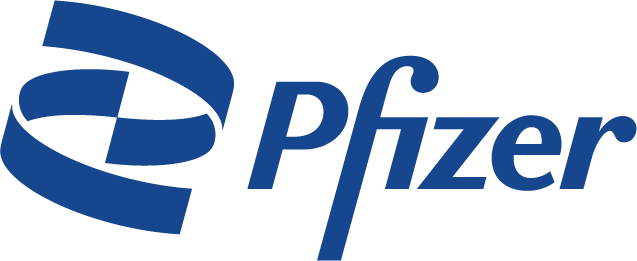Fitness Friday - Maintaining a Healthy Kinetic Chain

Recently my 5-year-old daughter asked me how a car works- I told her I push on the gas pedal and because of the engine and battery it makes the car drive. However, it got me thinking on how complex a car is and the many systems that work together to make it actually drive. I realized how much knowledge I was lacking with the engineering and functions of cars, how can I better educate myself on a car so I can better care for it to help it run smoother and longer.
When your car doesn’t start most people (me included) assume it’s the battery- when in reality we need to pay attention to the sounds or lack of sounds the car makes when we try to start it because it could be something else. Much like a car, our bodies are complex and there is so much more to our bodies than just a healthy heart (engine).
The phrase “a well-oiled machine” is one we think of when something works in unison, all parts are healthy and functioning well. Our bodies can be a “well-oiled machine” but we need to understand that there are joints and fixed segments that make our bodywork or not work.
As a personal trainer and running coach I often use the term kinetic chain when talking about the purpose of a set of exercises. The purpose of thinking and working with the kinetic chain is to help avoid injury, rehab from an injury, building a healthy body and performance for athletes.
There are two kinds of kinetic chain exercises: open and closed.
- Open kinetic chain exercises- or the furthest point away from the body, hand, or foot- is free and not fixed to an object
- Closed kinetic chain exercises- joints, knees, shoulder, elbow- is fixed or stationary
In a closed chain exercise, your hand or foot is in contact with a surface in which you are exercising- for example, a bicep curl your hand is moving freely whereas with a push up your hand is in contact with the ground and you’re pushing through the hand to perform the exercise. The biggest advantage of an open-chain exercise is you can control the isolation of a particular muscle group- better for rehabilitation.
Closed chain movements have their place for function- more helpful for performing daily tasks, full-body strengthening to perform. Squats and deadlifts translate well for daily tasks of sitting and standing from a chair or bending to pick up items off the floor. Strength exercises aren’t just for bodybuilders to build aesthetics, but for everyone to improve the performance of daily activities.
When learning about your body and how it works it’s helpful to see the purpose in strengthening from the core out. To find strength in what your body is going through with treatments, stress, change, healing- we need to be mindful of our movement and how it all works together to stay strong.
Some great exercises to help strengthen your kinetic chain, get creative with what equipment you have, you don’t need a fancy gym to do the movements:
Open chain upper body:
- Bench press- use a bar, a stick, light dumbbells
- Bicep curls- dumbbells, a stick, canned food
- Chest flys (laying on a flat surface)- dumbbells, canned food
- Lat pulldown (seated)- cable machine at gym or resistance bands
- Tricep extensions- dumbbells, resistance bands, canned foods
- Row- seated or bent over with dumbbells, resistance band, or canned foods
Open chain lower body:
- Seated leg extension- sitting in a chair
- Hamstring curl- lying on your stomach and curling your leg up
- Plantar/dorsiflexion- flexing and extending your foot
Closed chain upper body:
- Push-ups- on the floor, on knees, or against the wall
- Planks- full plank, modified on wall or chair
Closed chain lower body:
- Squats- with weights or not, to a chair or against a wall (variations can go from Sumo or wide, hip-width and narrow, each working just slightly different leg muscles)
- Deadlift
- Lunges- moving reverse helps keep better form
- Leg press
It’s important to remember when you have pains, injuries that the pain may not be where the weakness is. Often it’s the opposing muscle groups that have the weakness, be sure to incorporate push and pull movements together because they help us in our daily functions. Think of the analogy of the car, if it’s not starting or making weird noises our first instinct is to think it’s the battery- but sometimes it’s not. Our pains may not be what they seem- remember to strengthen your kinetic chain to increase strength together and help your body run stronger through all its stresses.
Thanks to our Muscles for Myeloma sponsors!
 .
. 


Recently my 5-year-old daughter asked me how a car works- I told her I push on the gas pedal and because of the engine and battery it makes the car drive. However, it got me thinking on how complex a car is and the many systems that work together to make it actually drive. I realized how much knowledge I was lacking with the engineering and functions of cars, how can I better educate myself on a car so I can better care for it to help it run smoother and longer.
When your car doesn’t start most people (me included) assume it’s the battery- when in reality we need to pay attention to the sounds or lack of sounds the car makes when we try to start it because it could be something else. Much like a car, our bodies are complex and there is so much more to our bodies than just a healthy heart (engine).
The phrase “a well-oiled machine” is one we think of when something works in unison, all parts are healthy and functioning well. Our bodies can be a “well-oiled machine” but we need to understand that there are joints and fixed segments that make our bodywork or not work.
As a personal trainer and running coach I often use the term kinetic chain when talking about the purpose of a set of exercises. The purpose of thinking and working with the kinetic chain is to help avoid injury, rehab from an injury, building a healthy body and performance for athletes.
There are two kinds of kinetic chain exercises: open and closed.
- Open kinetic chain exercises- or the furthest point away from the body, hand, or foot- is free and not fixed to an object
- Closed kinetic chain exercises- joints, knees, shoulder, elbow- is fixed or stationary
In a closed chain exercise, your hand or foot is in contact with a surface in which you are exercising- for example, a bicep curl your hand is moving freely whereas with a push up your hand is in contact with the ground and you’re pushing through the hand to perform the exercise. The biggest advantage of an open-chain exercise is you can control the isolation of a particular muscle group- better for rehabilitation.
Closed chain movements have their place for function- more helpful for performing daily tasks, full-body strengthening to perform. Squats and deadlifts translate well for daily tasks of sitting and standing from a chair or bending to pick up items off the floor. Strength exercises aren’t just for bodybuilders to build aesthetics, but for everyone to improve the performance of daily activities.
When learning about your body and how it works it’s helpful to see the purpose in strengthening from the core out. To find strength in what your body is going through with treatments, stress, change, healing- we need to be mindful of our movement and how it all works together to stay strong.
Some great exercises to help strengthen your kinetic chain, get creative with what equipment you have, you don’t need a fancy gym to do the movements:
Open chain upper body:
- Bench press- use a bar, a stick, light dumbbells
- Bicep curls- dumbbells, a stick, canned food
- Chest flys (laying on a flat surface)- dumbbells, canned food
- Lat pulldown (seated)- cable machine at gym or resistance bands
- Tricep extensions- dumbbells, resistance bands, canned foods
- Row- seated or bent over with dumbbells, resistance band, or canned foods
Open chain lower body:
- Seated leg extension- sitting in a chair
- Hamstring curl- lying on your stomach and curling your leg up
- Plantar/dorsiflexion- flexing and extending your foot
Closed chain upper body:
- Push-ups- on the floor, on knees, or against the wall
- Planks- full plank, modified on wall or chair
Closed chain lower body:
- Squats- with weights or not, to a chair or against a wall (variations can go from Sumo or wide, hip-width and narrow, each working just slightly different leg muscles)
- Deadlift
- Lunges- moving reverse helps keep better form
- Leg press
It’s important to remember when you have pains, injuries that the pain may not be where the weakness is. Often it’s the opposing muscle groups that have the weakness, be sure to incorporate push and pull movements together because they help us in our daily functions. Think of the analogy of the car, if it’s not starting or making weird noises our first instinct is to think it’s the battery- but sometimes it’s not. Our pains may not be what they seem- remember to strengthen your kinetic chain to increase strength together and help your body run stronger through all its stresses.
Thanks to our Muscles for Myeloma sponsors!
 .
. 



about the author
Linnley Sweeney
Linnley joined HealthTree in January 2020 as the Fitness Events Manager. Her husband is a childhood cancer survivor as well as a cancer biologist. Finding a cure, better treatments, and balance through treatments is what drives their family. Linnley is an Advanced Cancer Exercise Specialist and focuses on finding what you can do rather than can't.
More on Navigating Your Health
Trending Articles
Upcoming Events




Get the Latest Multiple Myeloma Updates, Delivered to You.
By subscribing to the HealthTree newsletter, you'll receive the latest research, treatment updates, and expert insights to help you navigate your health.
Together we care.
Together we cure.
3x Faster.













